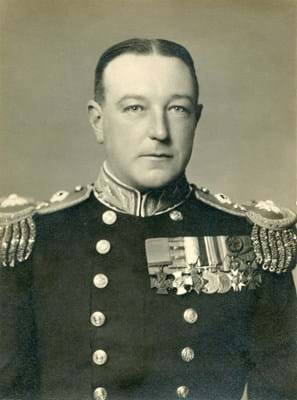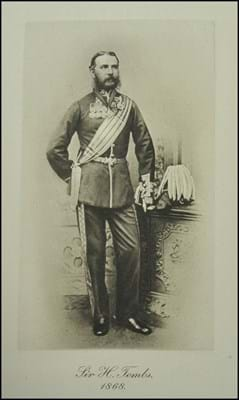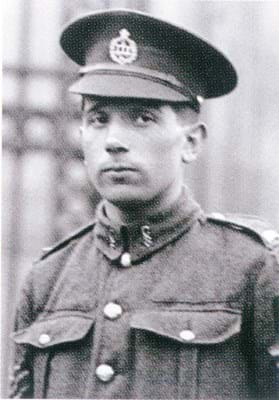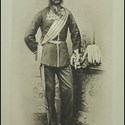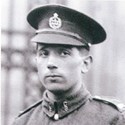The extraordinary VC group of 11 medals awarded to Vice-Admiral Gordon Campbell for First World War heroics fighting a U-boat sold for a £700,000 hammer price (£840,000 with premium).
And two more VC sales are about to take place also in London: at Spink on December 5 and Dix Noonan Webb (DNW)on December 6.
Decoy duties
Campbell’s group of 11 medals overall was consigned by a charity, The Fellowship of St John (UK) Trust Association, an Anglican charity working in education and mission, and proceeds wil aid its work.
He earned the VC as a captain of Q-ship Q-5, HMS Farnborough. On February 17, 1917, he allowed the ship to be torpedoed by German submarine U83. Having then drawn in the submarine through the ruse of a ‘panic party’ as she slowly sank, after half an hour the guns of Q-5 finally opened fire at close quarters and sank the enemy vessel in what may be regarded as a supreme test of naval discipline.
Campbell later subsequently declined the potential award of a bar to his VC (following nomination by his fellow officers) while captain of HMS Pargust, having successfully deployed the same tactics and sunk UC29 on June 7, 1917. His medal group also included the DSO with two bars.
The VC was bought by Baron Lorne Thyssen-Bornemisza, whose maternal great-grandfather was Sir Edward Tapsell-Campbell, brother of Gordon Campbell). He is offering the medals for display in a UK museum, where he hopes “as many people as possible will have the opportunity to learn about Gordon and his incredible story”.
(See the upcoming Militaria section in ATG No 2321 for the full story behind the Campbell medals.)
Record honours
The previous UK auction record for a VC was also set at Morton & Eden, in July 2014: that of Lt John Duncan Grant in 1905 for the British campaign in Tibet, which made £340,000 hammer (£408,000 with premium). It was bought by Lord Ashcroft and the full group is now on view in the Lord Ashcroft Gallery at the Imperial War Museum London.
The previous world auction record for a VC at auction was achieved in Australia in July 2011, when a VC sold for the then equivalent of £678,000 (Aus$1,002,000 hammer).
Centenary sale
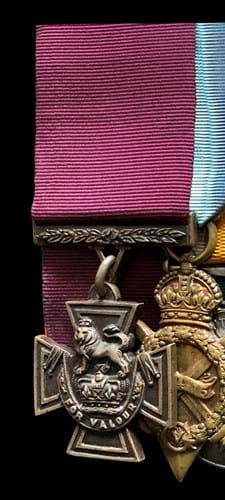
The Victoria Cross medal group won by Corporal Colin Barron during Passchendaele (the Third Battle of Ypres) in the First World War is estimated at £150,000-180,000 in the December 5 auction at Spink.
Another First World War VC medal group coming up for auction a century after they were earned is estimated at £150,000-180,000 on December 5 at Spink.
Corporal Colin Barron charged machine guns during one of the most devastating campaigns of the conflict - Passchendaele (the Third Battle of Ypres) - on November 6, 1917.
The group was purchased some 30 years ago from the family of the recipient and has remained with the same private collector in Canada since.
It is the first VC to be offered by Spink in five years (the previous example was a single Indian Mutiny period award sold at £70,000).
Heartthrob Harry
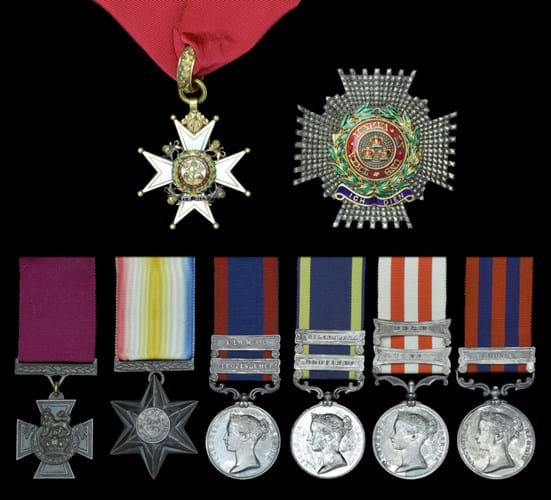
The Victoria Cross and other honours earned by Sir Henry Tombs (always known as Harry) is estimated at £200,000-250,000 in the December 6 Dix Noonan Webb auction.
A day after the Spink sale, on December 6, fellow London auction house DNW is offering the VC medal group of a man described by the saleroom as “one of the great heartthrobs of the Victorian age – a man so handsome that genteel ladies flushed pink and fluttered their fans furiously and so brave that his soldiers would follow him without hesitation into the most terrible battles”.
The VC and other honours earned by Sir Henry Tombs (always known as Harry) is estimated at £200,000-250,000.
“In Victorian Britain Sir Harry was what we call today an A-List celebrity,” says Pierce Noonan, a partner in DNW. “He was nicknamed ‘Cupid’ by ladies because of his good looks and even the great military commander Lord Roberts described him as ‘unusually handsome’. But he was equally famed for his bravery, winning the VC for saving a comrade from certain death and being mentioned in despatches for every campaign in which he fought. His premature death sent the nation into mourning.”
Sir Harry – at that time a Major - won his VC for saving the life of Second Lieutenant JamesHills during the Indian Mutiny in 1857. The two officers were serving in the Bengal Horse Artillery during the siege of Delhi when mounted mutineers launched a surprise attack.
Hills charged the enemy single-handed and, after killing and wounding several opponents, was knocked from his horse and had his sword wrenched from his hand. One of the mutineers was about to kill Hills when Sir Harry rushed in and shot his assailant dead. A second man then attacked and wounded Hills and once again Sir Harry intervened, running the attacker through with his sword.
His honours and awards are being sold by the family.


